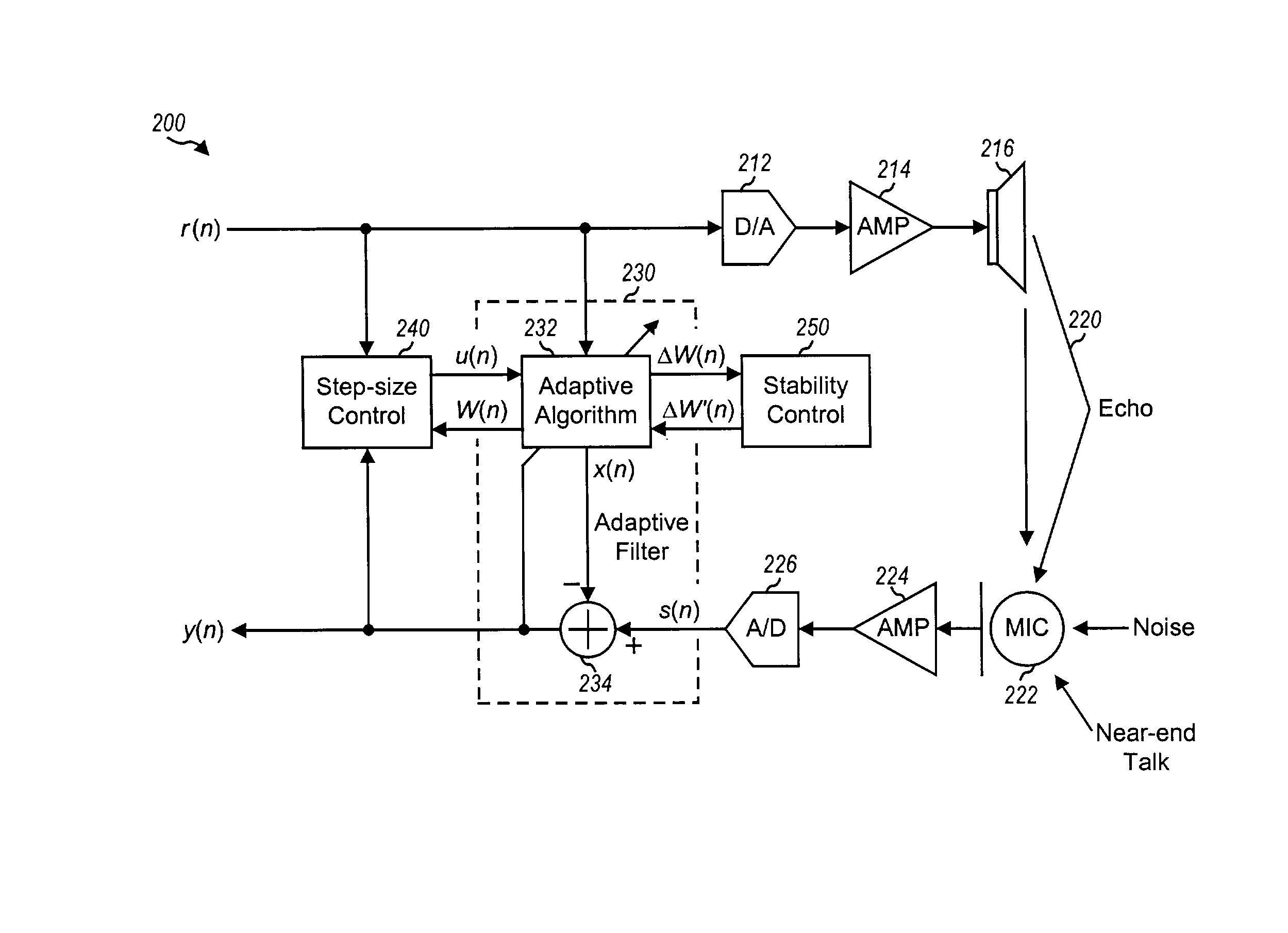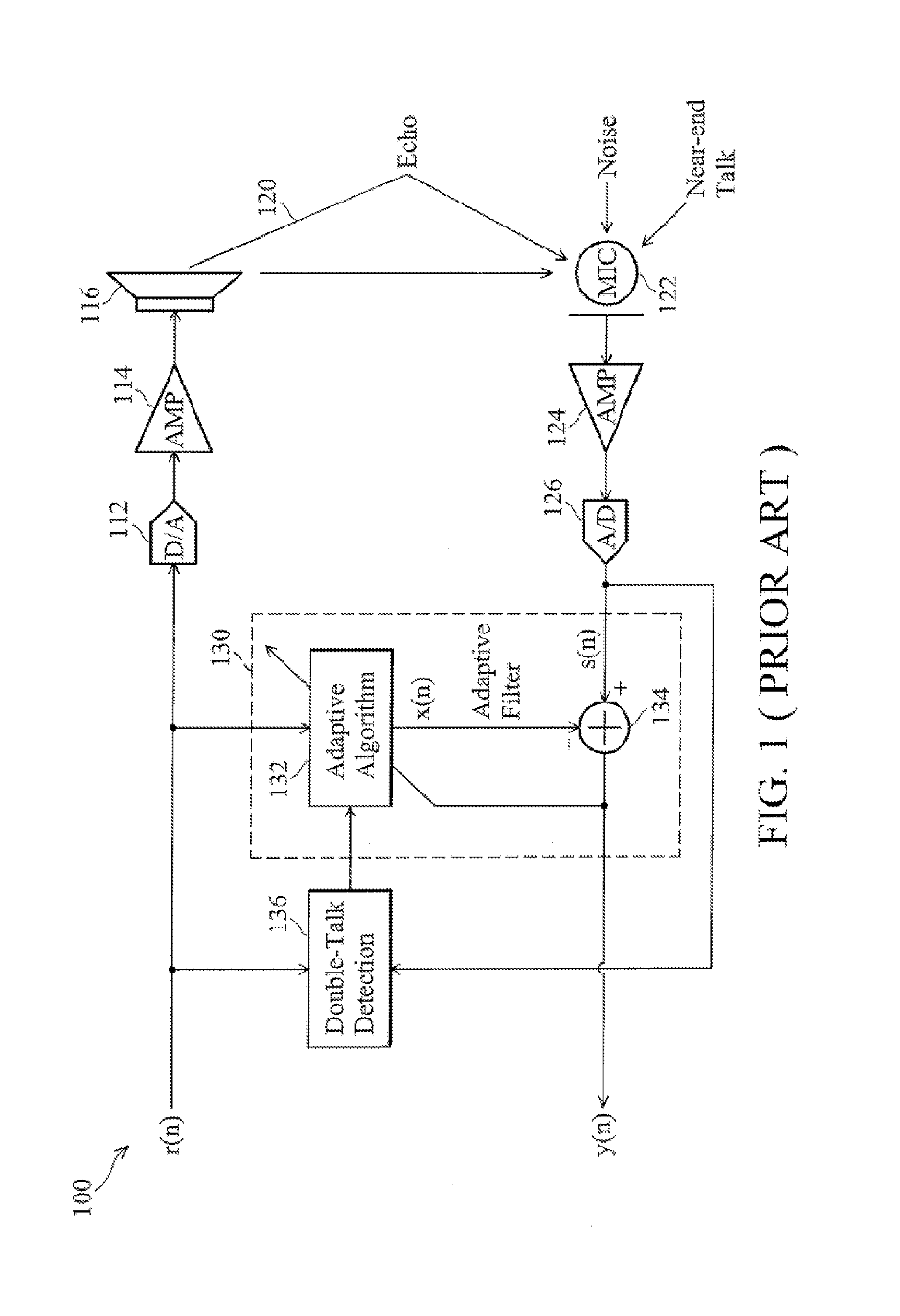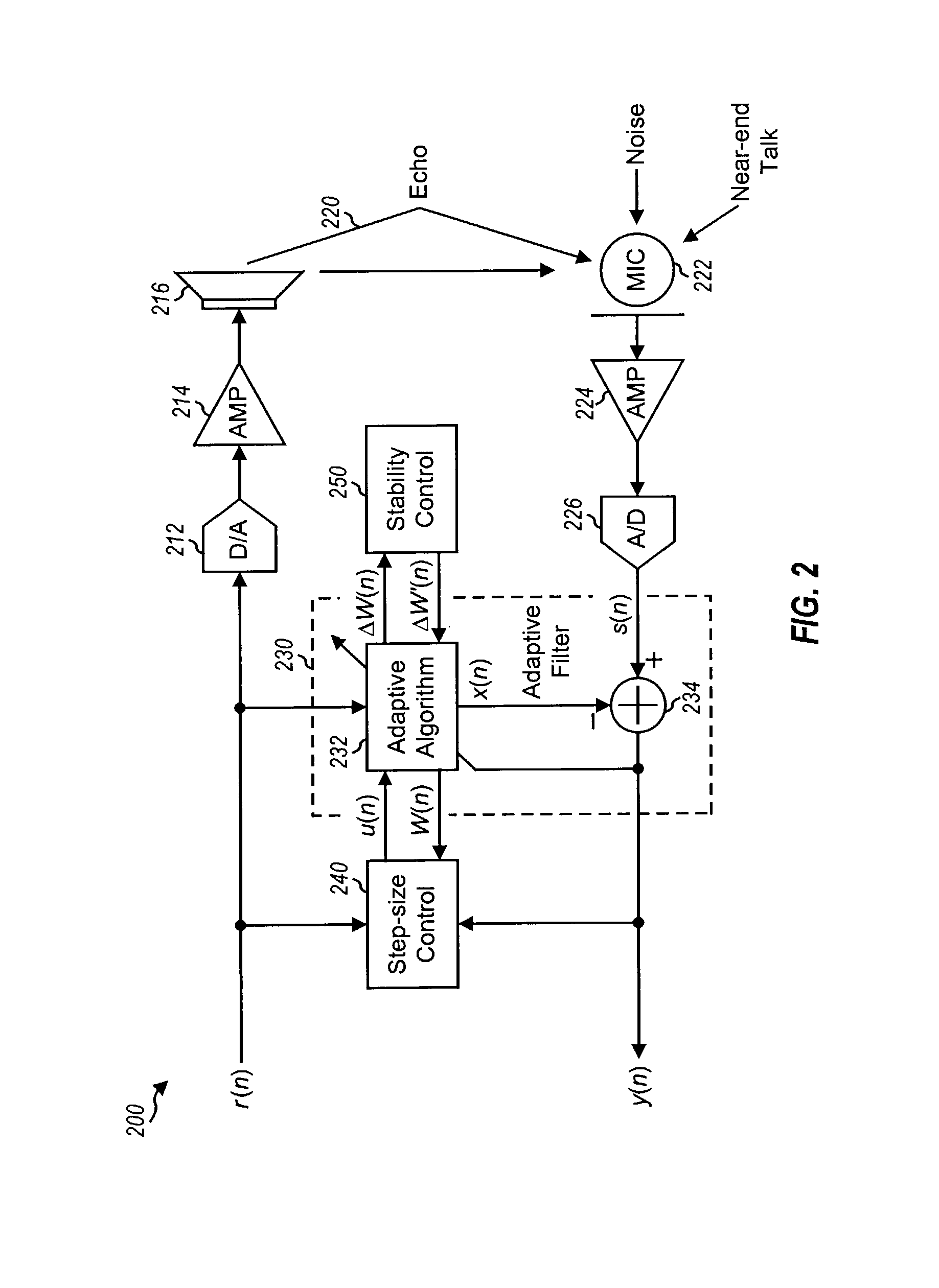Acoustic echo cancellation with adaptive step size and stability control
a technology of adaptive filter and acoustic echo, applied in the field of signal processing, can solve the problems of slow convergence rate of adaptive filter, unstable electrical circuit of the system, and howling, and achieve the effect of preventing deleterious effects and improving echo cancellation performan
- Summary
- Abstract
- Description
- Claims
- Application Information
AI Technical Summary
Benefits of technology
Problems solved by technology
Method used
Image
Examples
Embodiment Construction
[0025]For clarity, various signals and controls for the acoustic echo cancellation systems described herein are labeled with either lower case or upper case symbols. Time-variant signals and controls are labeled with “(n)”, where n denotes sample time. Lower case symbols (e.g., r(n)) are used to denote scalars, and upper case symbols (e.g., W(n)) are used to denote vectors. The operations shown in the figures may be scalar operations (if both input operands are denoted with lower case symbols) or vector operations (if at least one input operand is denoted with an upper case symbol).
[0026]FIG. 1 is a diagram of a conventional echo cancellation system 100. In the “output path”, a digital signal r(n), which includes audio activity (e.g., speech) from a far-end source, is converted to an analog signal by a digital-to-analog (D / A) converter 112, amplified by a power amplifier 114, and outputted from a speaker 116 to one or more near-end users. A far-end user is one who is located away (o...
PUM
 Login to View More
Login to View More Abstract
Description
Claims
Application Information
 Login to View More
Login to View More - Generate Ideas
- Intellectual Property
- Life Sciences
- Materials
- Tech Scout
- Unparalleled Data Quality
- Higher Quality Content
- 60% Fewer Hallucinations
Browse by: Latest US Patents, China's latest patents, Technical Efficacy Thesaurus, Application Domain, Technology Topic, Popular Technical Reports.
© 2025 PatSnap. All rights reserved.Legal|Privacy policy|Modern Slavery Act Transparency Statement|Sitemap|About US| Contact US: help@patsnap.com



